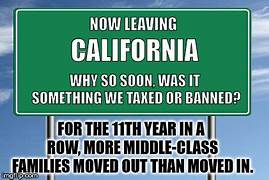Huntington Beach is known as “Surf City USA”. San Fran wants to be known as “Tent City USA”. They are packing the homeless into fleabag hotels, public facilities, but mainly they are on the streets. Now San Fran wants them “orderly” on the streets, parking lots, empty lots, throughout the city. Government want to make sure you can not go to your doorstep for the newspaper, without seeing the homeless.
“San Francisco would have to provide every unsheltered homeless person a sanctioned area to live in a tent known as safe sleeping sites under a proposal up for a vote Wednesday. Homeless advocates are arguing it’s not the right approach.
The legislation, introduced by Supervisor Rafael Mandelman, would require that within 18 months The City open a sufficient number of safe sleeping sites to accommodate all unsheltered homeless persons “who are willing to accept a referral to such sites.”
This also means the city will be littered with porta-potties and mobile showers—to go along with thw human and dog feces on the streets—plus the homeless that like to sleep on Market Street at the entrances of buildings and stores. San Fran will take the title away from New Jersey for being the smelliest spot in the nation.
City would create sites for hundreds of tents under new homeless shelter proposal

Advocates say funding better spent on permanent housing
Joshua Sabatini, SF Examiner, 4/19/21
San Francisco would have to provide every unsheltered homeless person a sanctioned area to live in a tent known as safe sleeping sites under a proposal up for a vote Wednesday. Homeless advocates are arguing it’s not the right approach.
The legislation, introduced by Supervisor Rafael Mandelman, would require that within 18 months The City open a sufficient number of safe sleeping sites to accommodate all unsheltered homeless persons “who are willing to accept a referral to such sites.”
The effort would be overseen by the Department of Homelessness and Supportive Housing, whose new director starts next month. If the legislation is adopted, the department would initially have to provide within 60 days a plan to open enough safe sleeping sites to accommodate 500 people within nine months. A possible amendment may extend that time to 120 days.
The proposal is being heard for the first time Wednesday by the Board of Supervisors Budget and Finance Committee, on which sits Supervisors Matt Haney, Ahsha Safai and Gordon Mar.
It has drawn opposition from the Coalition on Homelessness, whose executive director Jennifer Friedenbach argued in a recent letter to the board that the money and the department’s time would be better spent on solutions to homelessness like rental subsidies and supportive housing. She also raised concerns it could lead to a ramp up of enforcement against homeless residents who may not agree to use the sites.
Mandelman argues that while he supports funding for housing, he thinks The City should also fund an expansion in safe sleeping sites to improve the conditions of residential and commercial corridors by reducing street encampments.
The coalition’s argument, “doesn’t answer the question: What about the people who are out on the street tonight?” he told the San Francisco Examiner.
“We cannot continue to, as a city, invest in housing, but leave it to the unhoused folks we cannot house to figure out where they are supposed to be,” Mandelman said.
While his proposal “is silent on enforcement,” Mandelman said, “I think it is reasonable to ask folks to move — to either accept that placement or to find another place to be.”
It may be a challenge for Mandelman to pass the legislation, however; he currently has no co-sponsors.
Haney told the Examiner Monday that he has yet to take a position on the legislation.
“I haven’t taken a position yet,” Haney said. “I’m still meeting with people about it and expect a robust discussion in committee.”
Mar said he was still considering it, as did Safai, but he said he was concerned about the costs.
RescueSF, a group co-founded by Marina resident Mark Nagel, Cow Hollow Association President Lori Brooke and Dolores Heights Improvement Club chair Carolyn Kenady, has been drumming up support for the proposal, which would represent a significant policy shift in how The City addresses the thousands living on the street.
“Without interim shelter, they are sliding further into chronic homelessness (especially deadly substance abuse and behavioral health issues),” the group wrote in an email Sunday asking people to call into the meeting to voice their support.
The Council of District Merchants Associations, a coalition of small business groups from a number of San Francisco neighbors, recently endorsed it.
“Letting people live on the street is inhumane,” Maryo Mogannam, president of the council, told the Examiner. “We’re a first class city in a first world country. People deserve better.”
But Friedenbach argued that focusing on temporary shelter like tents is just the wrong strategy. She said places like New York City that have a “shelter for all policy” spend too much of their funding on emergency shelter, where people get stuck, and not enough on permanent housing.
“We think the legislation should be killed,” Friedenbach told the Examiner. “We can continue having an appropriate number of safe sleeping villages without putting all our eggs in the tent basket, while using available dollars instead for housing at a cheaper per person cost.”
The exact cost of Mandelman’s proposal is hard to pin down.
In the midst of the pandemic, The City has is operating six so-called “Safe Sleeping Villages,” which annually would cost about $18.2 million, according to a new financial report on the proposal by the budget analyst. That breaks down to an average of about $190 per night per tent or $69,374 per year per tent. Costs vary by site from between $131 to $271 per person per night, the report said.
Mandelman’s legislation does not require the sites to come with all the services the existing sites do, such as on-site clinical, medical, or social services. Without those onsite services his proposal is estimated to cost an average of $93 per tent per night, or $2,778 per person per month, the report said. However, a lack of services could result in a poorly run site that would need to be closed, as happened in some trials, city officials said.
Another variable is how many people the sites would need to serve. The department has previously estimated it could range from 500 to as many as 5,000.
That would mean Mandelman’s proposal could cost anywhere between $16.9 million for 500 people to $169 million for 5,000 persons, the report found. And that’s not including items like transportation to the sites, harm reduction and other on-site support services. The current model being used for Safe Sleeping Villages, with the services included, would range from about $34.7 million to $346.9 million.
“We need more analysis from HSH about how to do this,” Mandelman said.
He believes that The City could figure out a successful model inclusive of some services with per night per tent costs at around $100. And he said creating a network of sites for a capacity of 1,000 would improve conditions on the streets, putting the estimate at about $40 million annually.
A city tally of homeless tents and structures as of February found there were 501 across San Francisco.
Mandelman said it would be “well worth tens of millions of dollars to actually have shelter options for people and be able to end street camping.”
“This is a goal that San Francisco has never set for itself,” he said.



